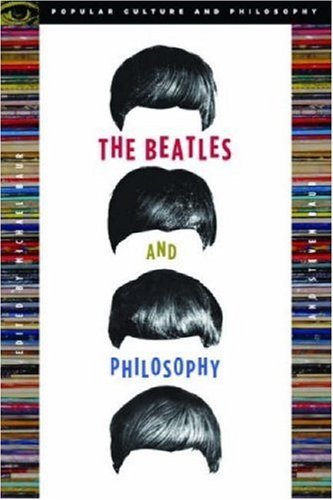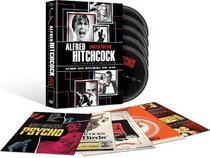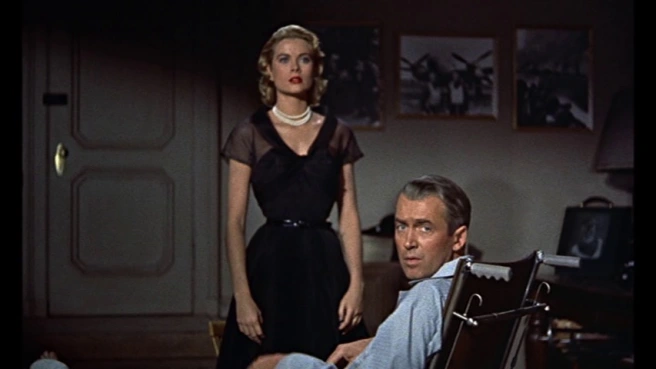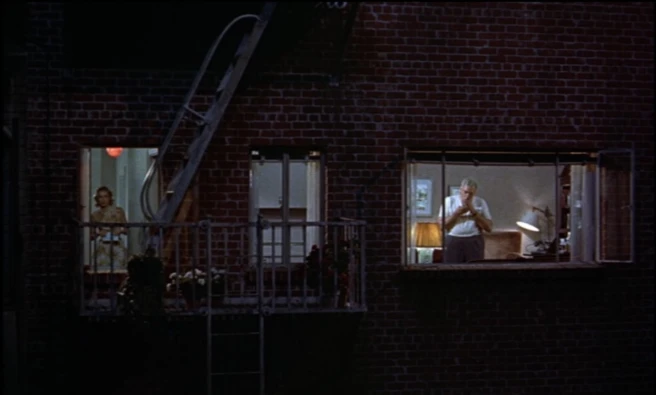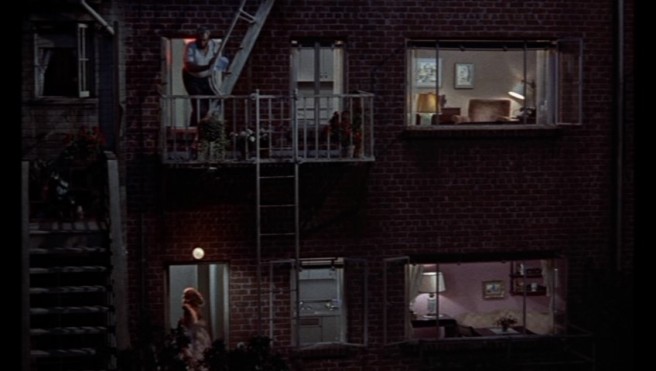The Beatles and Philosophy-Nothing You Can Think That Can’t Be Thunk
Description (from back cover):
The Beatles rapidly evolved from producing innocent teenage love lyrics to posing profound and disturbing questions about reality. They revolutionized popular songs intellectually as well as musically. Their work and their influence distilled all the enthusiasms and disquiets of the Sixties: the longing for more authentic relationships, the skepticism about radical leaders both spiritual and political, the eager yet critical embrace of consumer culture, the chemically assisted lift-off into inner space.
In The Beatles and Philosophy, twenty professional philosophers and ardent Beatles fans take a close look at the thought of the Beatles, and explore the implications of their ideas for life, love, society, politics, and spirituality.
This book is 25th in a book series called Popular Culture and Philosophy, made available by Open Court Publishing Company. Their website describes the series as bringing “high-quality philosophy to general readers”, presenting “essays by academic philosophers exploring the meaning, concepts, and puzzles within television shows, movies, music and other icons of popular culture.” Currently, the series has 123 volumes, including Seinfeld and Philosophy (the first volume), The Simpsons and Philosophy, Star Wars and Philosophy, Star Trek and Philosophy, Baseball and Philosophy, The Atkins Diet and Philosophy, and Sherlock Holmes and Philosophy. I’m not a fan of philosophy, but many of the titles sound interesting; I’d consider looking into their books on Seinfeld, The Simpsons, The Lord of the Rings, Star Wars, Superheroes, Bob Dylan, James Bond, Hitchcock, Pink Floyd, Star Trek, The Wizard of Oz, Led Zeppelin, Mr. Monk, Sherlock Holmes, The Catcher in the Rye, Planet of the Apes, Psych, Ender’s Game, Peanuts, Jimi Hendrix, and 1984.
For books I’ve purchased, I use purchase receipts as bookmarks, and, when I finish reading such books, I keep the receipts inside the back cover. This is the receipt for when I bought the book in 2007:
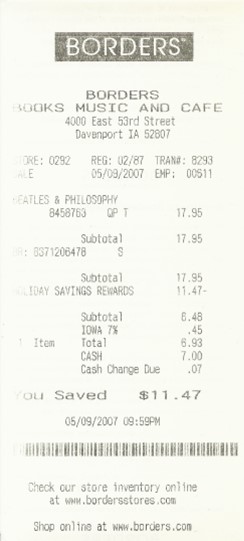
I bought this book at Borders Book Store (remember Borders? 🙂 ) in Davenport, Iowa. Having a rewards card for Borders stores, I saved over $11 on the purchase, spending less than $7 for the book.
I don’t remember buying this book … or even having read it. That’s obviously not a vote of encouragement for it, not having any impact. Honestly, if it didn’t focus on The Beatles, I wouldn’t have it in my library; I’ve never been interested in philosophy or writings on the subject. Of course, I understand that just everyday life and human existence includes some measure of philosophical thinking, even if only to a small degree. But active consideration of philosophy, and definitely philosophical analysis, has never been of any interest to me; I’m content with my probably-superficial understanding of knowledge and being.
Having said that, although I enjoy reading analysis by others of The Beatles and their work, I’ve found that re-reading this book for my review has been very difficult. I just can’t find the motivation to devote enough time to give focused attention to get into it. For quite some time now, I’ve many times started reading the book, but other circumstances come up and take away any interest I have in continuing, and, before I know it, weeks have passed and I’ve forgotten what I’d read so far.
I don’t mean to discourage anyone from reading this book; I’m sure there are many fans of The Beatles and/or of philosophy who’d enjoy it. But, although I consider myself a big fan of The Beatles, I guess my fandom isn’t big enough to overcome my not being a fan of philosophy.
The Preface is titled Hey Dude! Take a Beatles Song and Make it Philosophical (all of the section and essay titles make some kind of play on words of Beatles song titles or lyrics). The Preface discusses the question ‘Why write a philosophical book about The Beatles’, defines ‘a retorsion argument’, and refers to “the Fab Four of Philosophy”. This is followed by Acknowledgments for Permissions for the many lyrics quoted in the book.
Nine sections make up the body of the book. Each section contains two essays by various philosopher writers, and many of the essays contain subheadings:
- Section: NOTHING IS REAL – THE BEATLES ON KNOWLEDGE AND REALITY
- Essay: That is I Think I Disagree: Skepticism and Epistemology in the Beatles (Author: David Detmer)
- Subheading: The Limitations of the Senses
- The Danger of Self-Deception
- Against Following the Crowd
- Trouble with Gurus
- “Think for Yourself”: It’s Your Life
- We’d All Love to See the Plan: The Ethics of Belief
- Essay: That is I Think I Disagree: Skepticism and Epistemology in the Beatles (Author: David Detmer)
I didn’t care much for this first essay as it focuses more on philosophy than on The Beatles. The author spent more time on describing philosophical ideas than on discussing The Beatles; most references to The Beatles were select lyrics chosen to illustrate whatever ideas about philosophy was mentioned. In all honesty, it took me many attempts to get through this essay, I found it so uninteresting to read.
-
- And the Time Will Come When You See We’re All One: The Beatles and Idealistic Monism (Michael Baur)
This second essay did a better job in relating The Beatles to its ideas, by using a variety of references to songs and lyrics. My gripe with the essay was its overuse of the book Beatlesongs as the source of quotes. Beatlesongs (one of my first Beatles books and a favorite) contains collections of statements made by the Beatles about their songs and features references to the sources of those statements; I feel that the essay’s referencing the original sources of the quotes it used would’ve added depth to the points it made.
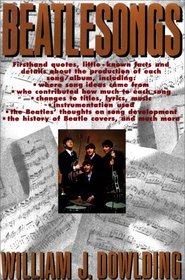
- THE LOVE YOU MAKE – THE BEATLES AND THE PHILOSOPHY OF LOVE
- All You Need is Love: Hegel, Love, and Community (Jacob M. Held)
- Come Together: Hegel, Love, and Recognition
- My Independence Seems to Vanish in the Haze: Hegelian Freedom
- All You Need is Love: Hegel, Love, and Community (Jacob M. Held)
This essay was another difficult (boring) one to read. The author does the same as the earlier one, discussing his theories of philosophy so much more than discussing The Beatles; throughout most of the essay, the only Beatles references were snippets of lyric phrases about once every three or four paragraphs. There was one imaginary example described, using Paul and Ringo in a made-up scenario, to describe “Hegel’s theory of human nature”, but it’s only a supposed situation and doesn’t really say anything definite about The Beatles themselves. The essay did mention how The Beatles’ viewpoint of love changed during their career, from one of “simple juvenile crushes” to a more mature view, but the only evidence given for this maturity were the lyrics “I am he as you are he as you are me and we are all together” and “all you need is love” … in my opinion, the essay would have been more interesting if the author developed this point with more of these examples explained and not so much time discussing Hegel (🥱).
-
- All My Loving: Paul McCartney’s Philosophy of Love (Robert Arp)
- I’ll Send All My Loving … But What Does Love Mean?
- Paul’s Philosophy of Love
- It Were a Grand Thing, The Beatles
- All My Loving: Paul McCartney’s Philosophy of Love (Robert Arp)
The fourth essay is the first interesting one so far, in my opinion. The author builds on what the earlier author mentioned, a maturing viewpoint of love, although focusing on only Paul, but has many more song and lyric references than the earlier essay, and it even refers to specifics in Paul’s life (ex.: The Beatles’ time in Hamburg, Paul’s relationship with Jane Asher, Paul and Linda’s marriage). The essay describes different types of love, but this info is given to set up and support the points being made about Paul and not done like the earlier essayists pulling individual Beatles references to support their philosophical ideas. One interesting part of this essay is a quick mention of Paul’s marriage to and divorce from Heather Mills but no mention of Nancy Shevell; I guess this dates the book. Anyway, I enjoyed this essay.
- DEAR PRUDENCE, JUSTICE, AND VIRTUE – THE BEATLES AND MORAL PHILOSOPHY
- Getting Better: The Beatles and Virtue Ethics (James S. Spiegel)
- Happiness is a Contemplative Life
- The Word is Good: Aristotelian Virtue
- It’s Getting Very Near the End …
- Getting Better: The Beatles and Virtue Ethics (James S. Spiegel)
I found this essay very interesting. The author explained Aristotle’s doctrine of virtue ethics. Virtue and vice are discussed and described in a way I hadn’t considered before: “A virtue is a midpoint between extremes, an intermediate between two vices, one involving deficiency and the other involving excess”. The first example given to define this was the virtue of giving freely to others being between the two vices of stinginess and wastefulness. Other examples used were virtues and vices related to pride, modesty, anger, justice, and wit. Most of these were illustrated by references to Beatles lyrics and even situations from Beatle history (ex.: Prudence Farrow’s over-meditating in Rishikesh, Cynthia’s reaction to John’s taking up with Yoko). And the author made good use of the Beatles references, in my opinion: unlike the other essayists using fleeting references to ‘prove’ their declarations (‘The Beatles were skeptics because the Nowhere Man “just sees what he wants to see”‘; ‘the guitar feedback at the beginning of “I Feel Fine” proves that The Beatles subscribed to the theory of idealistic monism’ 🙄), the Beatles references in this essay were used just to illustrate the explanation of virtue ethics and made it more interesting.
-
- She’s a Woman: The Beatles and the Feminist Ethic of Care (Peggy J. Bowers)
- What is My Life, Without Your Love?
- Happiness is a Warm Relationship?
- The Real Revolution: You Can Learn How to Be in Time
- And in the End, the Love You Take …
- She’s a Woman: The Beatles and the Feminist Ethic of Care (Peggy J. Bowers)
This essay emphasizes examples in The Beatles’ songs of “the group’s expression of feminine (if not explicitly feminist) sensibilities”. The author uses lyric examples to point out a social morality on the part of The Beatles that’s mostly considered ‘feminine’: “Help” demonstrates how contact with others leads to completing a person’s sense of self and confidence, “Yesterday” illustrates the importance of care in humanity, “Oh! Darling” points out fear of social isolation, “When I’m Sixty-Four” shows the importance of togetherness in life, “Here Comes the Sun” and “Good Day Sunshine” “portray joy as an embodied experience that create social bonds”. I 100% agree with the author’s statements and appreciate the examples she used to make her points; her comments regarding “Lady Madonna” and “Eleanor Rigby” were very interesting. I wouldn’t have minded the essay being a little longer to have the author elaborate on one point she’d made that “Paul and John … eventually entered into important collaborative relationships with female companions”, Linda and Yoko. It would also have been interesting to read examples of her earlier-mentioned comment that The Beatles weren’t “explicitly feminist”. Overall, I enjoyed this essay.
- WHY DON’T WE DO IT IN THE MARKETPLACE? – THE BEATLES AND SOCIAL PHILOSOPHY
- You Say That You’ve Got Everything You Want: The Beatles and the Critique of Consumer Culture (Scott Calef)
- It’s All Too Much 🙂
- My Love Don’t Give Me Presents
- Tell Me What You See
- You May Think the Band are Not Quite Right
- Nothing is Real
- You Say That You’ve Got Everything You Want: The Beatles and the Critique of Consumer Culture (Scott Calef)
I didn’t really care for this one. Although I agree with a lot of what the author described (the futility in attaching too much importance to consumerism, The Beatles struggle with consumerism vs. freedom and human nature), I thought his way of proving his points was sloppy: as other earlier authors did, he refers to many snippets of lyrics, but he uses them from so many different songs, it doesn’t seem cohesive. He refers to George’s dialogue in the A Hard Day’s Night movie as if they were George’s own words. And the essay credits “I’m Down” to John, not Paul.
-
- You Say You Want a Revolution: Marx and The Beatles (Steven Baur)
- We All Want to Change Your Head
- You Say You Want a Revolution: Marx and The Beatles (Steven Baur)
I enjoyed reading this essay. While I don’t completely believe that Karl Marx is featured on the cover of the Sgt. Pepper album because The Beatles might’ve had “a special affinity for the great German philosopher and social theorist”, most of the essayist’s comments make sense, in my opinion. Although the essay begins with definitions and explanations of Marxist philosophy (yawn!), it does set the stage for later statements about how Marxist philosophy’s reflected in The Beatles’ history. For example, the author defines the division between the social classes the bourgeoisie and the proletariat and then describes how The Beatles’ success moved them from one to the other (although not moved entirely). I like that the author doesn’t do what others have in making general declarations about the Beatles’ philosophies, like stating that they’re 100% Marxists. One interesting point is that not until the release of the song “A Hard Day’s Night” are working-class ideas mentioned in any of their songs; the essay even points out that ‘it’s the only song from the Billboard Top 100 pop chart of 1964 that makes any reference whatsoever to the world of work’. It’s interesting how the author shows The Beatles in a sense waking up to Marxist thinking by 1964 and showing more awareness of it in their releases in the following years. Also interesting is the comparison made of “Good Morning Good Morning” to “Piggies” (and to Pink Floyd’s Animals album). John’s songs are emphasized as being influenced by Marxist ideas (“I’m Only Sleeping”, all three versions of “Revolution”, “Working Class Hero”, “Power to the People”, “Imagine”). Overall, this essay is very well written and an interesting read.
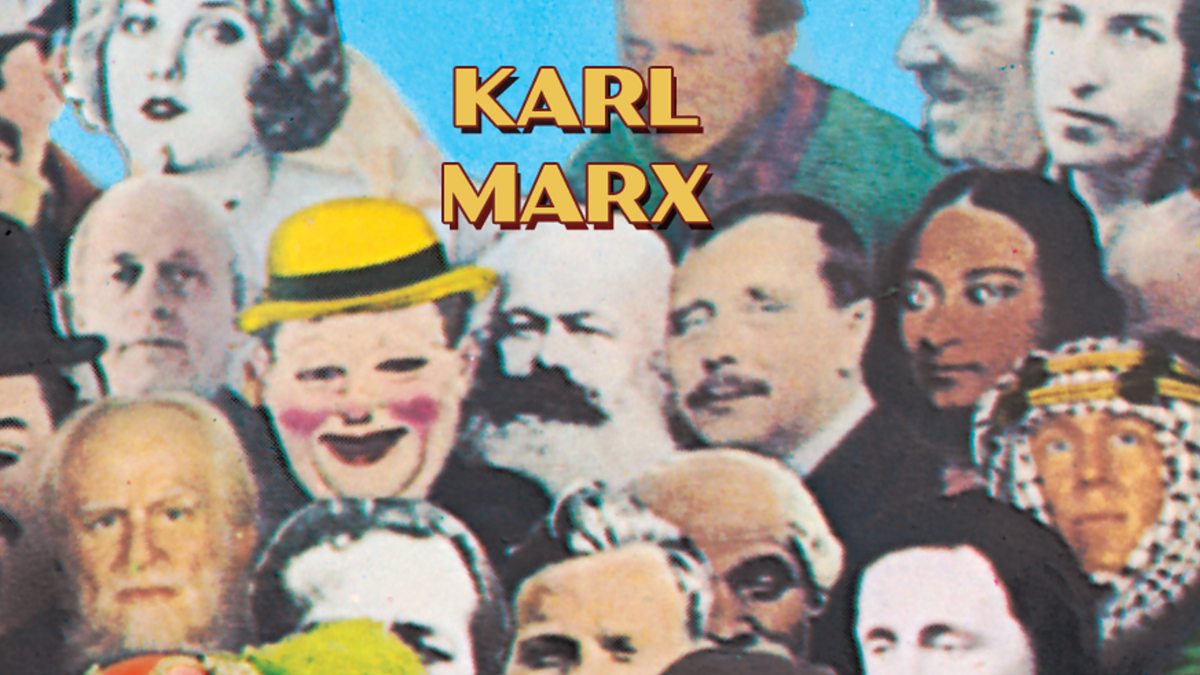
- THINK FOR YOURSELF – THE BEATLES AND EXISTENTIAL PHILOSOPHY
- Nothing’s Gonna Change My World: The Beatles and the Struggle Against Inauthenticity (Erin Kealey)
- Into This World We’re Thrown
- People Who Gain the World and Lose Their Soul: Everyday Human Existence
- Look at All the Lonely People: The Alienation and Self-Deception of Living Inauthentically
- As the Nowhere Man Sits in His Nowhere Land: The Call to Authenticity
- Listen to the Color of Your Dreams: The Task of Living Authentically
- Seeing the Love There That’s Sleeping: The Admirable Compassion of The Beatles
- Nothing’s Gonna Change My World: The Beatles and the Struggle Against Inauthenticity (Erin Kealey)
I started not liking this next essay; it began by going in depth in describing the teachings of German philosopher Martin Heidegger. But the essay then got more interesting as it discussed specific Beatles lyrics in light of Heidegger’s teachings: Fallenness is described using “Within You Without You”; Moodedness, or State of Mind, is discussed using the lyrics of “Rain”; our Ownmost Potential relates to the lyrics of “Nowhere Man”; Reticence is discussed in relation to “Fixing a Hole”; a Throwing Forward or Projection is referenced in “Penny Lane”; Unheimlichkeit, or Uncanniness, is described with “She’s Leaving Home”; Finite Freedom relates to “Tomorrow Never Knows”. Other songs analyzed are “Good Morning Good Morning”, “A Day in the Life”, “Only a Northern Song”, “Strawberry Fields Forever”, “Eleanor Rigby”, “I Me Mine”, “I’ve Got a Feeling”, “Lucy in the Sky with Diamonds”, “I’ve Just Seen a Face”, “The Fool on the Hill”, “Dear Prudence”, “Yesterday”, “Help!”, “Blackbird”, “While My Guitar Gently Weeps”, and “Across the Universe” … and this isn’t done by just grabbing random phrases to make a point, but the lyrics are commented on in a way that feels more ‘authentic’ in the analysis. I don’t think that I fully understand everything discussed about Heidegger’s teachings, but I don’t feel as confused or bored with this essay as I have with others, so, that’s a positive, right? 👍
-
- George on Being and Somethingness (Michael H. Hoffheimer and Joseph A. Hoffheimer)
- The Harrison Family Curse
- India
- Existentialism
- Nothingness
- Bad Faith
- The Big I
- Inner Light and Outer Sun
- Ineffable Somethingness
- George on Being and Somethingness (Michael H. Hoffheimer and Joseph A. Hoffheimer)
I’m not a big fan of this essay. The authors mostly fall back on the annoying habit of using snippets of lyrics to prove their philosophical points. I have two main criticisms. The first is the amount of time spent in this George-centric essay on discussing the teachings of Jean-Paul Sartre in relation to John’s lyrics (and even a bit of Paul’s). I’m also bothered by fleeting references made to the works of The Beach Boys and Woody Allen 🤷♂️; if valid points are being made by these references, it would be nice to have specific examples of their songs/films to illustrate. Looking past those gripes, I can say that the essay did get interesting in describing George’s use of light imagery (e.g., eyes, vision, sun) in his lyrics; it posits ideas about George’s songs that sound valid. One statement made says that George’s “greatest songs” “Here Comes the Sun” and “While My Guitar Gently Weeps” avoid “concrete representations and narrative yet manage to convey a seriousness of purpose and depth of meaning that reward close, repeated listening.” I wish the discussion of more of George’s songs and, ideally, the whole essay were as interesting as this idea about George’s use of light imagery.
- THEY ALL WANT TO CHANGE YOUR HEAD – THE BEATLES AND CONSCIOUSNESS-RAISING
- Realizing it’s All Within Yourself: The Beatles as Surrogate Gurus of Eastern Philosophy (Ronald Lee Zigler)
- Surrendering to the Void
- Vedanta and The Beatles
- Realizing it’s All Within Yourself
- The Fool on the Hill Glides Across the Universe
- And in the End
- Realizing it’s All Within Yourself: The Beatles as Surrogate Gurus of Eastern Philosophy (Ronald Lee Zigler)
Essay 11 was another one I found difficult to read. Although the author did stay mostly focused in explaining how Eastern philosophy is reflected in specific Beatles songs (“Tomorrow Never Knows“, “Within You Without You“, “The Fool on the Hill“, and “Across the Universe“), the description of the philosophy made very little sense to me. Regardless of my not agreeing with the teachings, I found the definitions given poorly written and not structured in a way that was logical to understand. Brief mention was made of one of my favorite Beatles songs, “It’s All Too Much” 🙂, but, try as I might, I just couldn’t understand what the author said about how the song presents Eastern philosophical ideas. The only point in the essay that I agree with is that The Beatles’ fomenting of eastern philosophy in their music made the boys “surrogate gurus in their own right”, for what it’s worth.
-
- I’d Love to Turn You On: The Beatles and the Ethics of Altered States (Jere O’Neill Surber)
- How ‘Normal’ is ‘the Normal State of Consciousness’?
- How ‘Ethical’ is the ‘Normal State of Consciousness’?
- Can I Treat Myself Immorally?
- I’d Love to Turn You On: The Beatles and the Ethics of Altered States (Jere O’Neill Surber)
This next essay was also difficult to read. The author spent a lot of time describing the idea of ‘normal’, ‘rational’ consciousness vs. ‘abnormal’, ‘irrational’. The ‘normal’ is usual, day-to-day reality, and the ‘abnormal’ includes altered states such as dreaming or being under the influence of drugs. The essay describes “emotional memory and intense love” as two “states of consciousness other than the rational, normative one of lucid awareness” earlier described as ‘normal’. It’s with these ‘abnormal’ states that the author makes the major reference to The Beatles; specific songs on Rubber Soul, Revolver, Sgt. Pepper’s, and The White Album are named … which qualifies the essay for inclusion in this book. But, going back to my usual gripe, too much time is spent defining the philosophy, and not enough time is spent on The Beatles (sorry to sound like a skipping record).
- WE CAN THINK IT OUT – THE BEATLES ON THE PRACTICE OF PHILOSOPHY
- But I Can Show You a Better Time: The Beatles and the Practice of Philosophy (James B. South)
- You May Be Awoken
- Now That You Know Who You Are, Who Do You Want to Be?
- Nothing to Get Hung About
- Nothing to Do
- I’ve Found a Driver and That’s a Start
- But I Can Show You a Better Time: The Beatles and the Practice of Philosophy (James B. South)
This essay’s author details “a distinction between ‘Philosophy’ and ‘Applied Philosophy'”, described as types of philosophical issues, theoretical vs. applied practice, that can be considered, or “the relation between what the philosopher teaches and how the philosopher lives”. Focus is given to “You Won’t See Me” and (one of my favorite Beatles songs) “I Want to Tell You” in the discussion of the practice of philosophy; regarding the latter song, emphasis is given, of course, to use of the words “I”, “me”, and “my mind”. Other Beatles songs briefly discussed include “The Fool on the Hill“, “Rain“, and (?!?!) “Drive My Car” (used to conclude the essay in a way that seemed to me completely out of left field). This essay wasn’t the worst in the collection; it kept my attention, I was mostly able to follow along in understanding, and its references to The Beatles was interesting. The point that I appreciated most was the author’s observation, “I suspect many people view the practice of philosophy in exactly this way: it’s endless speculation that makes no real difference in our lives.” … 🙋♂️
-
- Take a Sad Song and Make it Better: The Beatles and Postmodern Thought (James Crooks)
- Verse One: Postmodernism and the Revolution Effect
- Verse Two: “Count Me Out!” or the Nowhere Man Effect
- Verse Three: “Count Me In” or the Glass Onion Effect
- Verse Four: “Count Me In” or the I Am the Walrus Effect
- Coda: The Hey Jude Effect
- Take a Sad Song and Make it Better: The Beatles and Postmodern Thought (James Crooks)
Holy moly, Essay 14 was difficult to read. It started out great: the author described his discovery of The Beatles from a neighbor friend and then discusses interacting with another friend after learning about the death of John Lennon; I enjoy hearing fans’ specific remembrances related to The Beatles. After sharing these accounts, the author defines ‘meta-narrative’ and ‘postmodern’ as he leads into the meat of his writing: ‘we have something to learn from the Beatles about philosophical postmodernism’… and that’s where he lost me. This essay is written in a way that readers interested in philosophy might understand but not necessarily in a way that Beatles fans would (not that the two are exclusive, but, as I’ve said already many times, I’m one and definitely not the other). From what I could understand, postmodern philosophers fall into what the author describes as “one of three ultimately unsatisfying roles: the intellectual “Nowhere Man“, the “Glass Onion” deconstructionist, or the “Walrus” post-structuralist”. Interestingly, the author explains also the “Hey Jude” effect, “a marvelous spirit of optimism”, ending his writing on a nice high note. Highlights of the essay, in my opinion, include lists of Beatles songs relating to alienation (the Nowhere Man effect), irony (the Glass Onion effect), and nonsense (the I am the Walrus effect), and also reference to the Borg from Star Trek 🖖
- ZARATHUSTRA’S SILVER HAMMER – THE BEATLES AND NIETZSCHE
- Fixing Metaphysical Holes: The Beatles, Nietzsche, and the Problem of Incompleteness (Rick Mayock)
- And When My Mind is Wandering
- It Really Doesn’t Matter if I’m Wrong I’m Right
- There’s a Place Where You Can Go When You Feel Low, and it’s Your Mind
- I’m Painting a Room in a Colorful Way
- I’m Taking the Time for a Number of Things
- Four Thousand Holes in Blackburn, Lancashire
- Come Together … Right Now
- Tell Me the Answer
- Help Me Get My Feet Back on the Ground
- Fixing Metaphysical Holes: The Beatles, Nietzsche, and the Problem of Incompleteness (Rick Mayock)
My goodness, I hated Essay 15. I apologize in advance to the essayist, but, in my opinion, this essay was very-much poorly written. I’ve mentioned many times how I don’t like when the authors recite random lyrics to illustrate or refer to their comments on philosophy; this author seemed to do that more than the others. The essay focused primarily on Paul’s “Fixing a Hole” and, secondarily, dissected also John and Paul’s “A Day in the Life“, and was pretty thorough in discussing almost all of the songs’ lyrics. But scattered throughout were many other Beatle lyrics that didn’t necessarily support points being made; it seemed more like the author was trying to show off how clever he was in inserting as many lyrics as he could… but instead of impressing this reader with his ability to pepper his essay with Beatles lyrics, I was annoyed with having to try to understand what ideas were being argued. On top of that, I didn’t care for the portrait made of Nietzsche and his philosophies; he was drawn as an arrogant, unreasonable philosopher, and and I disagree with his ideas about reality and truth and, based on this essay’s description of them, have no desire to learn more about them… I really didn’t enjoy this essay 😡
-
- The Beatles as Nietzsche’s Music-Playing Socrates (Paul Swift)
- Philosophic Training Outside Academia: Will the Real Philosophers Please Stand Up?
- Forbidden Knowledge: Dionysian Frenzy
- Southern Cooking: Eliminating the Corruptors of Our Youth
- Dangerous John
- The Beatles as Philosophical Visionaries
- The Beatles as Nietzsche’s Music-Playing Socrates (Paul Swift)
In this writing, the author discusses how The Beatles mostly embody Nietzsche’s ideas about real, Dionysian philosophers, emphasizing ‘the importance of music, dancing, and laughter for philosophy’. It’s interesting to learn that Nietzsche and Socrates each attempted composing music, and the essay compares them to The Beatles’ success in ‘transforming the world by bringing new music to life’. 🤷♂️ After discussing how ‘the frenzy of Beatlemania is very close to Nietzsche’s Dionysian’ concept, the author compares Nietzsche’s viewpoints on God and religion to John’s, referring to his lyrics in “God” and in “Imagine“. This is followed by a section detailing the ‘bigger than Christ’ situation. I found this essay mildly interesting; my biggest gripe is that the author mistakenly says that “Lucy in the Sky with Diamonds” was inspired by a drawing made by Sean Lennon and not by Julian.
- NUMBER NINE, NUMBER NINE, NUMBER NINE – THE PLAY OF LANGUAGE AND THE PLAY OF DIFFERENCES IN THE BEATLES
- And of Course Henry the Horse Dances the Waltz: Lennon’s Lyrical Language Games (Alexander R. Eodice)
- Nowhere Man and the View from Nowhere
- Lennon’s First-Person Perspective: I am He …
- All You Need is Language
- And of Course Henry the Horse Dances the Waltz: Lennon’s Lyrical Language Games (Alexander R. Eodice)
In reading essay #17, I started off with a negative impression, but when I finished, I was happy with what it concluded. The title led me to anticipate good things; I’m a fan of Lennon, of language, of Lennon’s use of language, and of “Being for the Benefit of Mr. Kite!” The essay immediately referred to John’s lyrics as “playful attempts at stringing sounds together in such ways so as to make them … seem deeply meaningful.” This, of course, brought to mind John’s great books In His Own Write, A Spaniard in the Works, and Skywriting by Word of Mouth. The essay lists “two fundamental aspects to [John’s] writing…: the first-person perspective and … a purely linguistic approach”, the second aspect showing “the limits of sense and the value of nonsense from a purely linguistic perspective.” It was in the discussion of “Nowhere Man” that the essay lost me. The author referred to the teachings of Thomas Nagel, adopting a “view from nowhere”, attaining “objective knowledge about the world” and freeing oneself “from subjectivity in order to view the world as it actually is” … I have no idea what any of this means. 🤷♂️ The author made many points about “the external (objectivity) and the internal (subjectivity)” among lyric snippets from “Nowhere Man”, and this whole section of the essay made no sense to me. The second section was even more difficult for me to understand, mainly because it made use of philosophical terminology that’s foreign to me: “Lennon sometimes takes a deeply introspective Cartesian stance which leads … to lyrics which constitute solipsistic fantasies about living in a dream world or knowing what it’s like to be dead.” This section did touch on an interesting subject, in my opinion: it called the lyric “listen to the color of your dreams” from “Tomorrow Never Knows” “a clear instance of synesthesia, the idea that a sensation usually associated with one sense is joined with a sensation ordinarily associated with another sense”; I’d never considered that lyric to be related to that idea. The last section of the essay discussed John’s “playful uses of language” and referred to his books. I like how the author described John as a writer “whose unique ability stems from his acute sense of the sense of language. For only one who has such a sense could create such a grand illusion of sense.” Reference is made to “Across the Universe“, ‘Mr. Kite’, and “I am the Walrus“. While more lyric examples would’ve been cool to have, the essay did conclude with interesting comments on John’s entertaining and expert use of language.
-
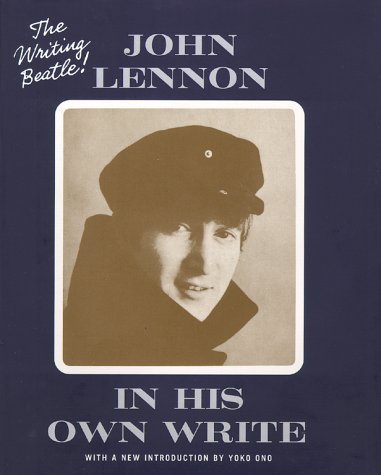
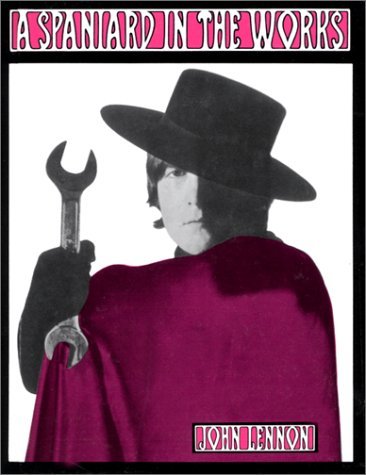
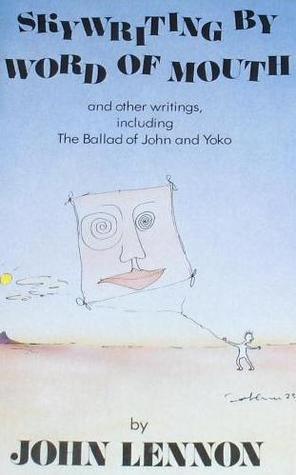 http://www.paperbackswap.com
http://www.paperbackswap.com- Four Play with a Difference (Richard Falkenstein and John Zeis)
- Act Naturally
- You Can’t Do That
- Roll Over Beethoven
- I’m Happy Just to Dance with You
- With a Little Help from My Friends
- Revolution I
- Tomorrow Never Knows
- Think for Yourself
- Get Back
- The End
- The Beatles Compleat
- Four Play with a Difference (Richard Falkenstein and John Zeis)
The first paragraph of the book’s last essay states that ‘The Beatles taught us differences by continually challenging many of the presuppositions about what popular music is and can be’. In detailing this, the authors define a couple of philosophical ideas: “Metaphysical dualism is the thesis that the human person is composed of two radically different substances: mind and body. The mind is wholly immaterial and is of a noble, rational nature. The body, on the other hand, is material and is of a base and irrational nature.” And, “Essentialism is the view that clear and rigid boundaries can be drawn around a kind of thing. And in aesthetics, this implies that clear and rigid boundaries can be drawn around what constitutes a work of art.” The essay shows how The Beatles’ work differed from the limits that these ideas enforce. For example, dualism is described as leading to “an exaggeration of the value of the formal elements embodied in the written score of music over the expressive, passionate, and emotional elements” and illustrates this by discussing the music of The Beatles and of “white rock’n’roll” being rooted in “the music of Black America”, blues and R&B. Regarding essentialism, the authors use “Love Me Do” to show how, despite being “on the surface a typical pop song” with simple lyrics, the melody is described as “sophisticated”, projecting “anticipation, yearning, humility, and confidence”, showing “in small measure the genius of The Beatles at an early stage”. Highlights, in my opinion, of this chapter are references to George Martin’s With a Little Help from My Friends: The Making of Sgt. Pepper (another of my first Beatles books), a chronological run-through of many of The Beatles’ albums, and an interesting explanation of how “The End” “could serve as a concise history and summation of Beatles music”. And I liked one sentence in particular, which I’ll use as a blockquote:
-
The music of The Beatles, like all great art, is significant because it discloses certain basic truths about who and what we are as human beings and what we take to be of absolute value.
The essays are followed by the following chapters/features:
-
- Revolvers – Beatle Album Discography
- UK Albums
- US Albums
- Revolvers – Beatle Album Discography
This first of the final chapters features chronological lists of Beatles albums released in Great Britain and America. Each listing includes the album title, the name of the label that released the album, release dates, and all of the album tracks, grouped by album sides. Some listings contain additional information; for example, The Beatles album includes the blurb ‘[a.k.a. “The White Album”]’, and US albums that are identical to their UK counterparts contain the blurb ‘Same as UK release’ instead of repeating the track names. The UK list covers March 22, 1963 through November 17, 2003, and the US covers January 10, 1963 through November 16, 2004… and, so, each lists more than just the main 13 albums (I include Magical Mystery Tour and Yellow Submarine). Interesting albums listed include, for the UK, A Collection of Beatles Oldies; the Red and Blue albums; Rock ‘n’ Roll Music; Live! At the Star-Club in Hamburg, Germany 1962; The Beatles at the Hollywood Bowl; Love Songs; Hey Jude; Reel Music; Live at the BBC; Anthologies 1, 2, and 3; Yellow Submarine Songtrack; 1; and Let it Be… Naked. The US list includes the early VeeJay, Capitol, and United Artists versions of albums up to Sgt. Pepper; Jolly What! The Beatles and Frank Ifield on Stage (?!?!); the US version of the Star-Club album; Rarities; and The Beatles Capitol Albums, Vol. 1. I’m not inclined to check the lists for accuracy; I’m sure they have their value (although, for discographies, I prefer Alan Wiener’s The Beatles: The Ultimate Recording Guide or even Castleman and Podrazik’s All Together Now, The Beatles Again?!, and The End of The Beatles? [despite their weird numbering system]). I guess my main question is, Why is this discography included in a collection of philosophy essays? It doesn’t seem to directly support any of the essays, and it really seems to only be filler material.
-
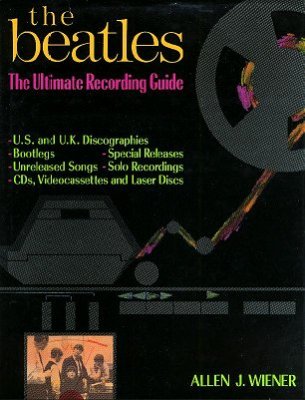
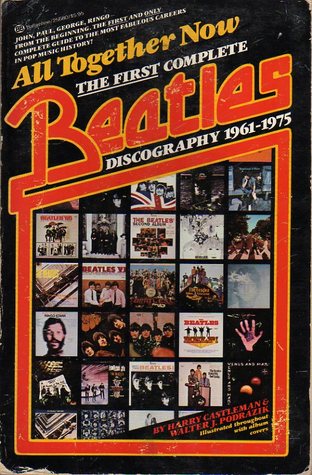

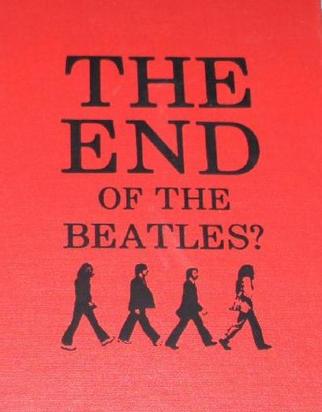 http://www.paperbackswap.com
http://www.paperbackswap.com- Not a Second Time – Songs Covered by The Beatles
The second of the follow-up chapters lists alphabetically artists who’d recorded songs that The Beatles covered, with the songs and their original release dates listed under the artists’ names. This, too, seems like filler material, but it does provide a little bit of interesting info. For example, the artist mostly covered by The Beatles was Elvis, with 25 songs listed (an introductory paragraph explains that songs are listed by the version that The Beatles emulated; so, while many of Elvis’ songs were themselves covers, They’re listed under Elvis’ name because his versions were what The Beatles were covering). And, while I have mp3 copies of many of the Beatles covers listed here, I see that there are many that I don’t have 🙁 . It would’ve been nice if the list included when The Beatles performed their covers, but I guess that info can be found by going to this chapter’s source, Mark Lewisohn’s The Complete Beatles Chronicle.
-
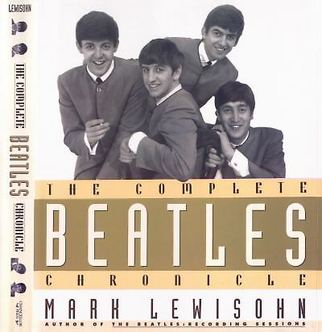
http://www.paperbackswap.com - Evil All-It’s Siluap! Those Hidden Clues (Compiled by Michael Caputo)
- Clues in the Albums
- Clues in the Movies
- Evil All-It’s Siluap! Those Hidden Clues (Compiled by Michael Caputo)
This is the most interesting of the final chapters, in my opinion. It lists items which supposedly support the Paul is Dead theory. The chapter lists as its sources R. Gary Patterson’s The Walrus was Paul: The Great Beatle Death Clues (which I consider a fascinating, if not creepy, book) and three websites, iamthebeatles.com, paul-is-dead.com, and (no longer active) turnmeondeadman.net. What this chapter is missing is an explanation of why the PID theory exists (for readers who don’t know) and also any philosophical thoughts on fans’ fascination with this theory (this being, after all, a book about philosophy 🤦♂️ ).
-
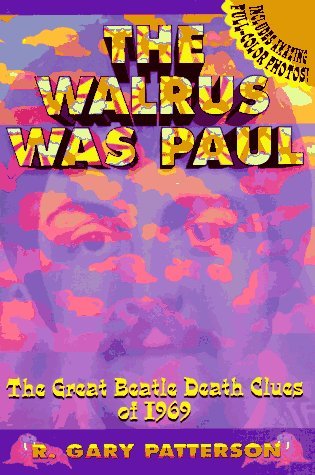
http://www.paperbackswap.com - The Fools on the Hill
This is a list of author bio paragraphs for each essayist. Honestly, I find the bios pretty lame; although they provide info about each author, their backgrounds, and their works, they’re littered with random phrases related to The Beatles and sound really contrived. For example, the one author’s claim to have ‘quit the police department and got a steady job’ (“She Came in Through the Bathroom Window“) sounds like a random grasp at anything Beatlesque to put in the bio (I looked up the author’s real bio, and it says nothing about his having worked as a cop). It is obvious, though, that many, if not all, of these people are Beatles fans, and many are even musicians.
-
- ABCD, Can I Bring Some Philosophers to Tea?
The last part of the book is a very thorough index (with a lame title 🙄 ).
OK, I’ve finally finished re-reading this book. My final thoughts: It’s not my favorite Beatles book (it’s far from it). But… I didn’t hate it. Some of the theoretical opinions given sound valid and at least provide alternative ways of looking at The Beatles and their work. I don’t believe the book has or will have any effect, positive or negative, on how I feel about The Beatles or even philosophy; but, it wasn’t the least-interesting Beatles book I’ve read. Looking back through my notes, I see that I said that I looked forward to re-reading it… then, honestly, after getting into the deeper essays (and also the poorly-written ones), I wasn’t enjoying the read overall. But now, having completed it, I’m happy to have done so. So, while it wasn’t a mind-blowing, earth-shattering book, it did have just enough interesting bits to make completing the reading mostly worth the effort. And for any Beatles fans who enjoy philosophy, I’m sure this book would mean even more.
313
I don’t believe in signs or omens. I have no interest in ideas involving fate or destiny or things happening ‘for a reason’. Having said that, I do like coincidences and happy instances of “time and unforeseen occurrence” or “unexpected events” happening.
I also don’t believe in numerology; I know that numbers don’t have any supernatural power or mean anything more than their numeric values. I say this as a fan of numbers. I’ve always enjoyed working with and even playing with numbers; math classes were among my favorite in school, and I’ve mentioned here before in another post that I dig Excel spreadsheets and using and calculating spreadsheet formulas and functions. I use numbers a lot in my current job, and I find it fun to look for patterns or ‘coincidences’ in the numbers that I encounter each day.
A game I play almost every day is based on the number 313. The game has one rule: to identify when I see the number 313 each day. If I encounter 313 anywhere, I win the game for that day, and if a day ends without my having come across it, I lose … As far as I know, in all the years and decades that I’ve played this game, I’ve never lost 😛
It feels weird to say that I notice a particular number every day. That’s such a definite statement and sounds like an annoying unnecessary exaggeration, like when people misuse the word “literally” 🙄. But I feel 99% secure in making that declaration. Each day, when I see 313, I tell myself, “There it is” (today’s occurrence). I can often recall the occasion on the previous day when I saw it. And I don’t remember any time at the end of a day that I thought, “I didn’t see 313 today” 🙁
I can’t say why 313 is the number that I look for. For whatever reason, that’s a number I notice every day. I recall instances when I was a child and I noticed 313. I remember reading a Disney comic book and seeing it on the license plate of Donald Duck’s car (as an adult, I’ve had verified for me that 313 is Donald’s official license plate number). I remember being bothered that people say that 13’s an unlucky number and are even afraid of it; how could such a bad number be most of the number I encounter every day?
At work recently, I came across a long number (not 313), and for whatever reason, I summed the number’s digits down to a single digit. By this, I mean that I added up all the digits of the number, and if the total was 10 or more, I summed the new number’s digits and continued doing so until I had just one digit, a number less than 10. So, for example, if the original number was 12345, I added 1+2+3+4+5 and now had 15. Since 15 is no less than 10, I summed its digits, 1+5, and now had 6. This is a ‘game’ I used to play with numbers when I was young.
That night, as I was in bed falling asleep, I thought about the number I summed down at work, and I did so again with other random numbers I could think of: phone numbers, addresses, dates, etc. I then tried it with my Social Security number… now, I’m not going to provide my SSN to show what resulted, but I’ll illustrate it this way: XXX-XX-XXXX became 12-10-12, which then became 3-1-3. That result caused me to sit up in bed 😲
Thinking about it, I know that there’s no deep meaning to all this. In fact, I’m sure that I’ve realized what happened. As I said earlier, not only have I played the summing-down-digits game since I was a child, I’ve done so also with the 313 game. I believe that I, many years ago, summed down my SSN to 313 and then began looking for 313 other places. Over time, although I continue to play 313, I’d forgotten how I discovered it until rediscovering it again recently.
I hope to not receive comments about any special meaning attributed to 313. I remember seeing something online about spiritual creatures using 313 for some purpose, but, again, I don’t give any credence to such beliefs. I know that numbers are just to signify quantities, for mathematics, and assist with categorizing/labeling. My sole purpose in writing this blog post was to share something silly about myself 😛
Rear Window

REAR WINDOW
My copy is part of the Alfred Hitchcock-Limited Edition-The Essentials Collection.
The movie is described on the back cover as:
James Stewart and Grace Kelly star in this voyeuristic masterpiece about a photographer who becomes obsessed with watching his neighbors and discovers a possible murder.
My immediate thought as the opening credits begin: the jazz score is pretty cool. There’s a hint of classic movie score feel to it, but it’s jazzy enough to make it hip. I wonder if a copy of just the score is available.
The credits are shown over a shot from the inside of our main setting with the window blinds going up as if a curtain rising before a play. Let the show begin!

Having watched the movie many times and being aware of its background by having read up on a few sources, I have so many initial thoughts after seeing just the first three shots post- introductory credits:
- I’m aware of how the apartment building/courtyard/street is one big set, and I’m amazed at how real and complete it is as, in the first shot, we pan around counter-clockwise. Every detail for such a setting seems to have been considered as we see a stray cat in the courtyard, and birds fluttering around and gathered up on a roof, and withered plant life, and a dog tied to a post in an alleyway. It’s obviously morning, and we see the different activities neighbors are involved in mornings: shaving, preparing breakfast, just waking, or sleeping in, as Stewart’s character is.
- We learn that a heat wave is going on: a close-up of a thermometer shows it’s over 90° already this morning, some neighbors are sleeping on their balcony, children are seen chasing a water truck down the street (I wonder how long that street was), a bead of sweat is seen running down sleeping Stewart’s forehead.
- In the third tracking shot we learn Stewart’s character’s name, L.B. Jefferies, as signed on his leg cast, his occupation as a photographer, and probably how his leg was broken by seeing a broken camera and some framed action photos.
… Again, I’m amazed at all Hitchcock was able to teach us in only three shots.
We also learn a lot from the first dialogue scene. Stewart’s character Jefferies (“Jeff”) receives a call from his employer and we have confirmed Jeff’s occupation and the reason for his broken leg. We also learn that he’s a bachelor in no rush to marry and that he’s spent the past few weeks recuperating in his apartment, bored, with nothing to do but watch his neighbors.
Jeff is shown doing this while on his phone call, and we witness the goings-on of some of the neighbors: the dancer (“Miss Torso”) preparing another meal, the musician composing, the old woman annoyed by Miss Torso’s music, the salesman returning home to his nagging wife. Hitchcock described all this in Hitchcock/Truffaut as ‘a group of little stories that mirror a small universe’. I like how Ty Burr, in The Best Old Movies for Families, describes it: “every one of the windows in the apartment complex is its own mini-movie”.
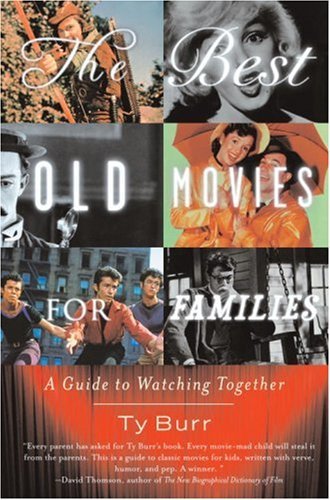
A funny early scene is when Jeff’s broken leg itches, causing him to reach into the cast with a backscratcher. His panicked look replaced by his look of relief … 😁
Thelma Ritter’s character Stella, Jeff’s nurse, has some of the best lines in this movie:
(Putting a thermometer in Jeff’s mouth) “See if you can break a hundred.”
(Discussing economic collapse) “When General Motors has to go to the bathroom ten times a day, the whole country’s ready to let go.”
Stella: “You’ve got a hormone deficiency.”
Jeff: “How can you tell from a thermometer?”
Stella: “Those bathing beauties you’ve been watching haven’t raised your temperature one degree in a month.”
“Look, Mr. Jefferies, I’m not an educated woman, but I can tell you one thing: When a man and a woman see each other and like each other, they oughta come together, wham, like a couple of taxies on Broadway.”
“Intelligence. Nothing has caused the human race so much trouble as intelligence.”
… a whole blog post could be written on Stella’s sayings.
Jeff is shown napping, and a shadow covers him as someone is approaching him sleeping in his wheelchair. Being a Hitchcock film, a first-time viewer might expect that this is a danger situation. But we then see a close-up of Grace Kelly leaning in to kiss Stewart. It’s a great introduction to Grace’s character Lisa Fremont; it reminds me of the zoom-in introduction to John Wayne’s character in Stagecoach.
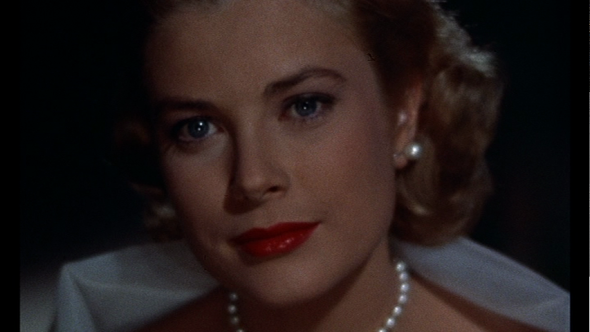
I have to say that I’m not one to fawn over a character in a movie. But Grace’s performance here is pretty great. Her introduction of herself as she turns on three lamps in the room:
(lamp one) “Lisa …”
(lamp two) “Carol …”
(lamp three) “Fremont” 😊
… I think this is Grace’s best movie performance.
Of each of the ‘mini-movies’ of Jeff’s neighbors, the one of the woman referred to as Miss Lonelyhearts is the one that I find most interesting. She’s a single woman who’s very lonely, and, in our introduction of her story, we see her setting a table for two. She then walks to open her apartment door, although we can see that there’s no one waiting there. She acts as if she has a guest, a date, and she mimes as if inviting him in, taking his hat, receiving a kiss on the cheek, pouring wine … and she then breaks down crying because she’s actually alone. What I find most interesting about her part of Rear Window is the reactions of our main characters to her story. While Jeff and Lisa watch the scene just described and initially seem sympathetic, they’re quickly distracted by activities of surrounding neighbors. This happens often in the movie, situations of concern regarding Miss Lonelyhearts being quickly overshadowed by other happenings, some not as serious. I see this as evidence of Hitchcock’s well-known wicked sense of humor.
I think a nice detail is that, just before we notice that there’s trouble in the living situation of the movie’s antagonist, among the background sounds of the neighborhood, we can hear a siren of, I think, a fire truck. It kind of sets the stage for what’s to come ⚠
While Jeff is watching those two just-mentioned neighbor moments, Lisa is preparing a meal for herself and Jeff, and Jeff makes slightly rude comments about their relationship as he talks about what they see across the courtyard. This is followed by a scene where Jeff and Lisa discuss the difficulty of being together with their widely-different individual lifestyles. These scenes are uncomfortable to watch, in my opinion, because I’ve already come to like both characters, and I want them to be happy together. It’s one of my least-favorite scenes in the movie: Jeff seems to be acting too rude to Lisa, and Lisa seems to be acting too stubborn to accept Jeff’s reasoning. I’m no film analyst (and I’m definitely no analyst of relationships), but I do see how these scenes play an important part in the development of the story of their relationship, but they’re not my favorite part of the movie.
The next few scenes have almost no dialogue. They occur overnight as Jeff dozes off-and-on while watching his neighbors: we hear what was probably the antagonist’s crime being committed, a light rain starts and catches the neighbor couple that sleeps on their balcony (a funny scene), the dancer and the musician are each seen returning to their homes after evenings out, the antagonist suspiciously leaves and returns a few times. This all happens with no dialogue but only ambient noise and Stewart’s reaction-acting to set the mood. It’s masterful moviemaking, evidence of Hitchcock’s genius, in my opinion.
Another of my favorite scenes (I have many favorite scenes 🙂) occurs the next morning. The couple who sleep on the balcony have rigged up a pulley system to lower a basket containing their small dog from the third floor to the courtyard. I dig animals in movies, and I like that the dog patiently waits in the basket as he’s lowered to the pavement.
Stella: “You’d think the rain would have cooled things off. All it did was make the heat wet.”
Jeff (referring to Miss Torso): “She sure is the ‘eat, drink, and be merry’ girl.”
Stella: “Yeah, she’ll wind up fat, alcoholic, and miserable.”
A cool effect occurs when Stewart’s character decides to commit to his investigation. When he uses binoculars, and also when he uses a long-focus lens, to spy on the criminal, the building across the courtyard is seen reflected in the lens glass. Movie posters and publicity photos often use reflections in lenses to show significant details. It’s interesting to see such detail in an active scene.
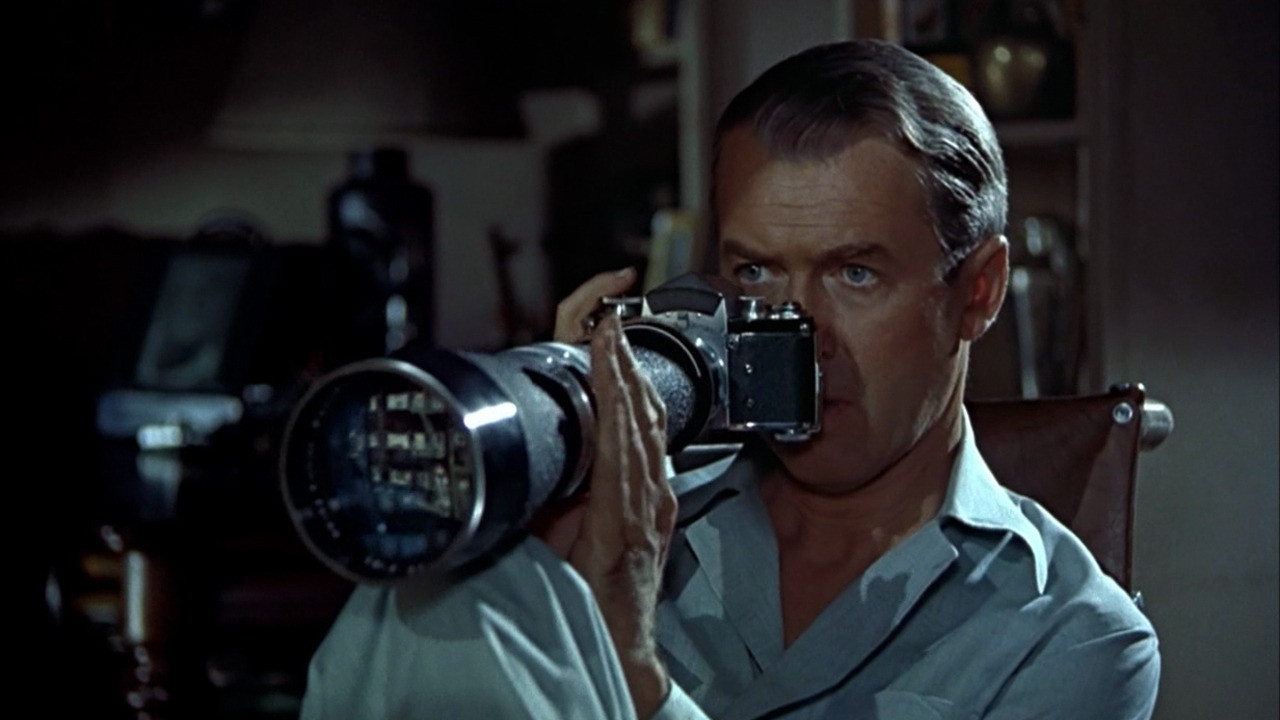
And now a scene that includes the pet owner whistling for the little dog and his coming to his basket, climbing in, and being towed up to their third-floor apartment. Animals in films are cool 🐶
That scene segues into what I consider Stewart and Kelly’s best scene in the movie. It starts with the two of them kissing, Jeff and Lisa having reunited and made up. But Jeff is obviously distracted by what he thinks has happened across the way. He speculates about the crime and again uses his binoculars. Lisa’s frustrated , not just by not having Jeff’s full attention but also by his spying actions, and she pulls his wheelchair around away from the window, and she scolds him. They argue a bit … and then Lisa’s look changes as her attention is caught by something she notices past Jeff, out the window, and across the courtyard. She slowly stands and asks Jeff to tell her again all his suspicions, she having now been convinced a crime has been committed.
A funny scene occurs the next morning. Stella has served Jeff his breakfast, but he’s not able to eat it while she shares her gruesome thoughts about the crime.
I’m not a fan of Doyle, Jeff’s detective friend who comes over to help Jeff with his investigation. Although the actor’s performance is adequate, it can only pale in comparison to the performances given by Stewart, Kelly, and Ritter.
Another chapter of the Miss Lonelyhearts story occurs. She’s shown bringing to her apartment a young man she’s met. She serves him and herself drinks, but, too soon after, he gets too friendly with her, causing her to slap him and throw him out of her apartment, and she again collapses in tears, all while party guests at another apartment sing “Mona Lisa”. Jeff and Lisa again idly watch, although this does cause them to question the ethics of their spying activity. But neither lifts a finger to come to Miss Lonelyhearts aid. Hitchcock was a cruel man 😈
Doyle appears in a scene that’s my earliest memory of Rear Window. Lisa has served snifters of brandy, and the three characters swirl their brandy as they discuss the case. Many years ago my mom was watching Rear Window, and I, a young boy, was kind of watching along while doing something else I thought was more interesting, like reading a book. At this scene, I didn’t understand why the people on the screen were swirling around their drinks, and I asked Mom about it. I don’t remember what her explanation was, but my takeaway was that it was a grown-up activity and not anything I’d take part in for many years. I didn’t realize at the time what movie Mom was watching, and I was pleasantly surprised when I saw this scene again when I discovered Rear Window for myself many years later.
The brandy scene also adds dimension to the character of Lisa. She started off as, although intriguing, too much a society girl, a bit superficial and too concerned with image and class status, in my opinion. But almost immediately after believing Jeff’s suspicions, she becomes cooler: in the next scene, she’s gone over to the criminal’s building, looked up the address and name of the persons involved, and called Jeff with that information. It’s like she’s now willing to leave her high society position to come down to our level of the investigation of the crime. But it’s not like she’s now a superhero. During the brandy scene, she shares her speculations about the crime, but each one is explained away by Doyle’s detective reasoning. Actually, Lisa is kind of made to look foolish in this scene. It’s like she’s not the brains but the brawn of the operation. But she wins, in my opinion, when, after Doyle leaves, she closes the blinds, walks by Jeff, shows him her overnight bag, and says, “Preview of coming attractions”.
Although Jeff and Lisa were convinced by Doyle that no crime had been committed, a small tragedy in the courtyard changes their minds again. What they see is the criminal sitting in a darkened apartment, smoking a cigarette, only the glow of the lit end visible. It’s kind of an eerie sight, but it’s cool that we’re allowed to understand what’s happening without too much explanation; we’re able to piece it all together because of a similar scene earlier. It makes me think of another situation where we’re allowed to discern what’s going on: Earlier there’s a scene where a character lays out on his couch to take a nap, but we can’t see the couch because it’s just below our line of sight. In a later scene, we see the same view, but with puffs of smoke rising from one end. Obviously the man is again reclining on the couch and is smoking a cigarette. I appreciate that Hitchcock doesn’t oversimplify everything but trusts that his audience is intelligent enough to follow along.
The investigation really picks up now when Jeff, Lisa, and Stella are together in Jeff’s apartment considering how to prove the crime. Lisa’s ideas are again inadequate, but she again wins over any doubters by her willingness to act on what they know. My favorite of all of Grace’s scenes is when she’s taking a message to the criminal’s building and she stops and gives a little wave to Jeff from across the way. And, after almost being seen by the villain, she returns to Jeff’s apartment, and the admiring look on his face show that he’s overcome also any doubt he had about her being the right girl for him.
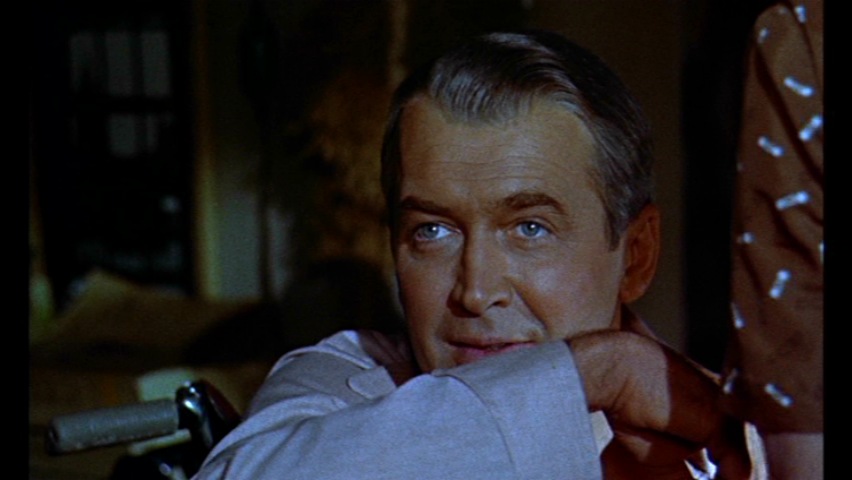
I dig the three-dimensional nature of the scene where Lisa delivers the note. We see her at the end of the alleyway, waving to Jeff. We don’t see her enter the building or ascend to the second story. But we see her come into the far end of the hallway and quietly walk up toward us, to the criminal’s door. She bends down, and, while we can’t see her slip the note under the apartment door, we see the criminal’s reaction to it: going to the door, opening it, and looking down the hallway, having just missed seeing Lisa. From Lisa’s entering the hallway to her leaving, everything’s seen in one static shot, Lisa’s actions visible through a window on the left side of the screen and the villain’s reaction through a window on the right. Masterful moviemaking in my opinion.
The ‘3D’ action continues. We see the villain, after having read the note, go down the hallway after Lisa, and, simultaneously, we see Lisa on the next floor down come up that hallway to the courtyard. She hides just outside the doorway until she hears the criminal come back up the second-story hallway and out onto the balcony above her, causing her to run back down the first-floor hallway. I’m no film student, but I dig when film takes advantage of all directions in scenes: up and down, left and right, front and back. And I dig how the Rear Window set is not just a façade but has depth and dimension; I wish I could have toured it.
During this action, we see another chapter, probably the most significant, in the Miss Lonelyhearts story. After Lisa leaves the scene across the courtyard, Stella notices Miss Lonelyhearts pouring out a large handful of sleeping pills, get herself a glass of water, and sit holding a Bible. But, while Stella and Jeff start discussing what such a quantity of pills could mean, Lisa bursts into Jeff’s apartment, after avoiding being noticed by the criminal, and Jeff and Stella are distracted from Miss Lonelyheart’s situation. Actually, our attention is also turned and mostly kept away from her and onto the main investigation. There is a quick cutaway while Jeff, Lisa, and Stella are planning their next move, where we’re allowed to see Miss Lonelyhearts letting down the blinds in her apartment, but nothing is said by our main characters about it because they probably didn’t notice it.. A few minutes later Jeff sees, through the blinds, Miss Lonelyhearts sitting to write a letter, and he comments that Stella was wrong about the sleeping pills. But a few more minutes after that, at the same time as one of the most critical scenes of the movie, Stella notices that her assumption was correct when Miss Lonelyhearts is ready to take the sleeping pills. Stella and Jeff are calling the police to intervene when Miss Lonelyhearts stops due to the actions of a tenant in a nearby apartment. What’s cool is that Hitchcock had this other activity occurring in the background throughout most of what we’ve been witnessing. The Miss Lonelyhearts story isn’t over yet, but, despite not being our main focus, it still has a lot of emotional effect.

Another favorite scene is when Stella and Lisa first mention taking impulsive action in the investigation:
Stella: “Let’s go down and find out what’s buried in the garden.”
Lisa: “Why not? I’ve always wanted to meet [the victim].”
Jeff: “What are you two talking about …?”
Stella: “You got a shovel?”
Jeff: “Of course I don’t have a shovel.”
Stella: “Probably one in the basement.”
Lisa: “Jeff, if you’re squeamish, just don’t look.”
Even though Jeff stops them before arranging matters to keep them safe, we see that these are brave women of action.
This is mostly evident in Lisa’s decision to climb up the fire escape and into the criminal’s apartment. She’s searching for evidence when we notice that the criminal has returned home and is coming up the hallway to his apartment. The suspense is heightened by our seeing Jeff and Stella’s nervously watching this take place; the camera angle of their reactions is from beside and a bit low, looking up at them … I don’t know why, but this makes them seem more anxious and the whole scene more suspenseful. I’ve never fully understood how camerawork affect scenes, but these filmmakers obviously did.
Not as immediately evident, there are additional moments that add to what I’ve been referring to as the ‘three-dimensional’ nature of the film. Lisa’s in the criminal’s apartment, has just found the evidence she was looking for, and is ready to leave. But she stops before opening the door to exit the apartment. We see that the criminal is approaching the apartment door. Lisa must have heard him coming, so she doesn’t exit. We don’t hear him coming up the hallway; we’re in Jeff’s apartment across the courtyard, and other noise (street and city noises, talk and music from other apartments) prevent us from hearing his footsteps.
Lisa runs back through the apartment into the bedroom and hides somewhere out of sight of our view. As we’re looking in the bedroom window, we see reflected in the open window the criminal entering the apartment. And, after entering the bedroom and noticing that someone’s been looking through his things, he turns, and his body language tell us that he’s found Lisa. Again, a reflection in an open window shows us what’s happening as Lisa backs out of the room away from the criminal. Her actions and gestures show that she’s trying to explain what she’s doing there, but we have difficulty hearing what she’d saying because of music that’s playing in another apartment. And when the criminal grabs Lisa and they struggle, her calls to Jeff for help are at the volume expected in this setting. I’m fascinated with how the window reflections and the sound and volume (or lack of it) add to the dimensions of this film.
Well, the police arrive, and Lisa is arrested. But, while arranging for Stella to bail her out and also explaining to Doyle over the phone what’s happened, Jeff loses track of the criminal: after Doyle’s call, Jeff looks across to the criminal’s apartment, and the lights are all off. He soon realizes that the criminal is coming around to Jeff’s apartment.
Hitchcock has described how he employed a few special effects in the scene where the criminal meets with Jeff. A color effect is used when Jeff tries defending himself when the criminal arrives. And as they struggle, neighbors hear and come out of their apartments; Hitchcock has mentioned having their reaction shots sped up a little to heighten anxiety. And some kind of superimposed technique is obviously used at the end of the struggle. It’s mostly effective.
I say mostly because I’m reminded of a time many years ago when I watched this with a friend, and he commented that the sped up and the superimposed shots looked funny to him. We were watching this on laserdisc (remember laserdiscs? 🙂), and my friend kept rewinding and fast-forwarding over these shots, and we couldn’t stop laughing at how silly they looked. Kinda ruined that part of the movie for me now ☹
Well, the crime is solved, and the criminal is caught, and the final scene is shown. It’s similar to the first scene in that it pans over the apartments across the courtyard. We receive closure in the stories of Miss Lonelyhearts, the musician, the dog owners, Miss Torso, the newlyweds. We see Jeff asleep again in his wheelchair. And we see Lisa reading a book about the Himalayas and dressed casually, not in a usual designer dress, but wearing jeans. The adventure has obviously affected her … but it hasn’t completely changed her: seeing that Jeff is asleep, she puts down the book and picks up one of her fashion magazines. And the blinds are drawn closed. The End.
Is it obvious how much a fan I am of Rear Window? It’s definitely my favorite of Hitchcock’s films and one of my favorites of all movies 😁
The Liebster Award
I’m EXTREMELY honored to have been nominated for the Liebster Award … but I’m ashamed and embarrassed to admit that I wasn’t aware of the nomination when it was made OVER A YEAR AGO (!?!?) by one of my favorite bloggers, Nicole, at her awesome site an ode to dust.
For the uninformed, the Liebster Award is explained at liebsterawards.com as:
It is said that the Liebster Award was created to recognize and/or discover new bloggers; and welcome them to the blogosphere. “Liebster” is a German word meaning beloved or dearest. This Award exists only on the internet as pixels, and is given to bloggers by other bloggers. Many see it as a way of promoting and recognizing fellow bloggers, for their efforts and accomplishments in becoming a bonafide blogger. Some see it as a nasty chain letter that needs to be snuffed out…
Getting noted for your work and being nominated for an award is a wonderful feeling.
It does follow similar principles as a chain letter, in the sense that it should be passed forward to a certain number of people. Variations have been made over the years to the “official rules”. (Regarding blog size, number of questions answered, how many other bloggers ‘tagged’, if you answer questions set by the nominator or just your own list of chosen facts; and whether or not you ‘thank’ the person who bestowed it upon you.) Other awards are a part of the whole “meme scheme”. These include “One Lovely Blog Award”, the “Sunshine Blog Award” and the “Versatile Writer Award”.
There is no governing body for the award(s) but this site is here to catalog the winners (and maybe help bloggers find new nominees!)
That site also posts the following rules:
If you have been nominated for The Liebster Award AND YOU CHOOSE TO ACCEPT IT, write a blog post about the Liebster award in which you:
- Thank the person who nominated you, and post a link to them on your blog.
- Display the award on your blog — by including it in your post and/or displaying it using a “widget” or a “gadget”. (Note that the best way to do this is to save the image to your own computer and then upload it to your blog post.)
- Answer the questions about yourself, which will be provided to you by the person who nominated you.
- Provide random facts about yourself.
- Nominate blogs that you feel deserve the award, who have a less than 1000 followers.
- Create a new list of questions for the nominees to answer.
- List these rules in your post.
- Inform the people/blogs that you nominated that they have been nominated for the Liebster award and provide a link for them to your post so that they can learn about it (they might not have ever heard of it!)
So, following the rules, I thank Nicole immensely for the nomination, and I encourage all readers of my posts to visit her fab blog 😊
Following Rule No. 2, I’ve posted the award above, but, honestly, I’m not a fan of the style; it’s a little too posh for my taste. So, I’m including one that’s a little more to my liking (sorry to be so particular):
Rule No. 3 is to answer the questions Nicole has asked. I was hoping to not have to use my brain this weekend, but I guess I’d better turn it on now (I hope it’s got enough of a battery charge).
- Are there any movie locations you would like to visit?
While visiting movie locations would be fun, this question leads me to think about movie sets that I wish I could have visited at the time of filming. For example, I find the set of Hitchcock‘s Rear Window fascinating. It would have been awesome to examine the apartments across the courtyard of Jimmy Stewart’s character. I read somewhere that some of the apartments were fully functioning places, with electricity and plumbing. I wonder about what existed that wasn’t seen on screen. For example, what was to the left and right of the sliver view that we have of the street across the way … I know it wasn’t a real street, but what was involved in having a water truck drive by, with a group of children following it as it watered the street. As I said, I find that set fascinating.

Another movie set I would have liked to see was the gateway in Kurosawa‘s Rashomon, where the characters discuss the different versions of the crime that was committed. That gateway looks massive, and I wonder what all was involved in its construction for the movie. Not that I’m interested in construction, but I’m amazed at all the work that goes into setting up these realistic places.

- Do you share a birthday with a famous someone?
Well, I don’t do birthdays. But according to Wikipedia, I share a birth year with DJ Jazzy Jeff, Diane Lane, Chris Rock, Sarah Jessica Parker, Robert Downey Jr., Brooke Shields, Elizabeth Hurley, J. K. Rowling, Shania Twain, Charlie Sheen, Björk, and Ben Stiller.
- Which films are on the top of your to-watch list?
Per my Netflix queue:
-
- The Harold Lloyd Comedy Collection: Vol. 2: Disc 2
- True Grit
- The Harold Lloyd Comedy Collection: Vol. 2: Disc 3
- Time After Time
- The Harold Lloyd Comedy Collection: Vol. 3: Disc 1
- Trouble in Paradise
- The Harold Lloyd Comedy Collection: Vol. 3: Disc 2
- Tron
- The Harold Lloyd Comedy Collection: Vol. 3: Disc 3
- Bus Stop
- If you were to make a biopic, who would it be about?
Akira Kurosawa, definitely. It would be specifically during his film-making years from the early’40s to 1965, when my favorites of his films were made. Although his early years and what was going on in the world would be an influencing factor, the film would focus on his film-making efforts: preparations, interactions with cast and crew, maybe a little on the impact the films made on their audience. Kurosawa was an interesting man and a genius film-maker, in my opinion.

- What are your other hobbies and interests?
I like adding to my three main collections of Beatles books, classic film discs, and classic rock CDs. I also enjoy playing around with the Excel spreadsheet program (weird as that sounds when I reread my answers).
- Is there a film that appeals to your aesthetics?
Wow, that is a hard question to answer. I can’t think of any particular style of a film appealing to me. What this question does make me think about is when film takes advantage of all three dimensions in telling its story. I referred to this in my review of Buster Keaton‘s Our Hospitality here. Specific scenes in films that make creative use of not just up-and-down and left-and-right but also front-and-back I find kind of appealing.
I guess that’s related to the appeal of the sets for Rear Window and Rashomon. In Rear Window, I think of the scene where Grace Kelly’s character has left a note at the door of Raymond Burr’s character and then quickly runs down the hallway, back away from our point of view. Also from that film, I think of when Stewart’s character is falling from his window, and we see the scene looking up from down in the courtyard, the first time our point of view leaves Stewart’s apartment; that change of our viewpoint added to the three-dimensional nature of the set. And Rashomon, our point-of-view was mostly from the front of the gateway. But later in the film, we go further into the gateway and turn to the left, and that turn, in my opinion, added so much to the largeness of that already larger-than-life set.
Maybe I should answer that 3D films appeal to my aesthetics 😊
- If you could visit a specific era, which one would it be?
Late ’50s through mid-’70s. Half of that time period overlaps my lifetime, but I’d like to see the world from another location and from an older and wiser (???) viewpoint.
- How did your interest in classic cinema evolve?
It was a book. I’ve described the details here.
- Which film would you like to see on the big screen?
I’d love to attend a Kurosawa film festival. If I had the time and resources, I’d organize one myself. Who wants to attend?
- Is there a movie you wish you could have taken part in?
A Hard Day’s Night; Rear Window; Seven Samurai; Steamboat Bill, Jr.; It’s a Mad, Mad, Mad, Mad World; The Last Waltz; The Party; You Can’t Take it with You
- Are there any actors or directors you would like to learn more about?
I’ve been getting into Yasujiro Ozu’s films. I enjoyed Tokyo Story and Late Spring, and I have a copy of Early Summer that I haven’t watched yet. I’d like to learn more about Ozu and his stars Chishu Ryu and the amazing Setsuko Hara.
I’m gonna skip Rule No. 4; I think I’ve shared enough random facts about myself in the answers above.
Rule No. 5 says to nominate other blogs. I nominate:
- Chaplin-Keaton-Lloyd film locations (and more)
- Silent-ology
- Serendipitous Anachronisms
- The Blonde at the Film
- Outspoken and Freckled
- Pillow Shots
- Grace Kingsley’s Hollywood
- Champagne for Lunch
Per Rule No. 6, I need to come up with questions for my nominees. Ugh, this is gonna be more difficult than answering Nicole’s questions. Let’s see, how about we go with a Three Favorites theme; just make quick and simple lists of your:
- Three Favorite Films
- Three Favorite Actors/Actresses
- Three Favorite Directors
- Three Favorite Musicians/Bands
- Three Favorite Songs
- Three Favorite Books
- Three Favorite Authors
I’ve followed Rule No. 7 above.
And I’ll follow Rule No. 8 after publishing this posting.
And with that I’ll end this. Please visit the blogs I’ve linked above; each one has entertained and instructed me many times, and I’m happy to consider it a privilege to direct other potential fans to them. And definitely visit Nicole’s site an ode to dust, my favorite of the bunch 😊

